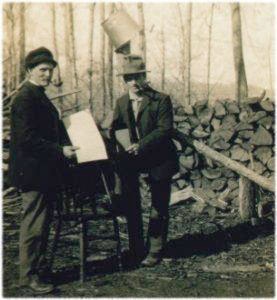Tools resting on Lake Country Museum’s shelves were a central point in establishing the Okanagan.
The tools were used by Edward (Teddy) Hare’s hands, who build some of the first homes in the area.
They were derived largely from a prominent builder Edward (Teddy) Hare, who built many of the homes. Jim Gleed, a stone mason, partnered with Hare to do the work.
The Gibson house (Kopje Park, Carr’s Landing), the Carter house, the Grey house, the Sundial house, the Hare home and the Grant house, were all built by Hare’s hands.
READ MORE: Historical happenings: Sam Hikichi avoids Asiatic Exclusion League riots in broom closet
Brick fireplaces and stone property walls were crafted by Jim Gleed. Hare Road was established in 1907 and was named in honour of the Hare family. Hare was born in Somerset England and moved to Vernon, in the Okanagan, around 1907. He later relocated up north to Fort Fraser. There, he was involved in bridge building for the Grand Trunk Pacific for roughly eight years before returning to the Okanagan in 1916.
READ MORE: Kelowna History: Murder on the S.S. Okanagan
He enlisted with the First Army Troop Company during World War I. He served for the remainder of the war and returned to purchase an orchard in Okanagan Centre in 1921 where he continued to build homes and structures. Hare’s two sisters lived with him at the ranch until 1928, the year he married his wife Susan. They met at the Okanagan Valley Land Company offices. In 1937 Teddy and Susan moved to Kelowna for the summer. Teddy was the supervisor of the architects for the Kelowna Post Office. Afterwards, he was in charge of similar projects, including the building of city hall, an addition to Kelowna General Hospital, and building the Kelowna High School.
It was not until 1953 that, for health reasons, Hare retired and sold his orchard. He died in 1963, his wife followed 18 years later.
READ MORE: Historical Lake Country happenings: Two stores compete in Oyama
By Lake Country Museum guest writer Jacob Semenuik. Every week, the Lake Country Calendar will publish a column highlighting our community’s past.
edit@kelownacapnews.com
Like us on Facebook and follow us on Twitter.
